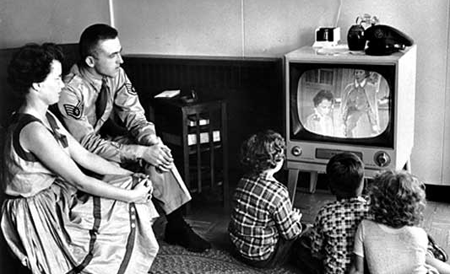 |
| http://waynestelevision13.weebly.com/uploads/1/4/5/6/14563764/3282673_orig.png |
The nature of learning has changed. Learners today, even adult learners in a professional session, are no longer drawn to a central, shared screen. The nature of viewership has changed.
In the 1950s options for television were slim. The most channels available at any point in the decade was 4...that's right, 4. Now let's think about the 2010s and television. Today you have a seemingly endless stream of channels to choose from, but that's not the most important part. The most important part is the shift to on demand content. As a majority viewers no longer sit to view a program from start to finish when it is first aired. Many DVR to watch when they are able, stream through the commercials and content that is not of use to them, and even more are viewing on-demand services. So what does this mean for professional learning? It means that we need to move away from the model of professional learning that resembles 1950s television.
No longer is it acceptable to offer professional learning that centers on a singular, sit-and-get moment. No longer is it acceptable to offer professional learning that is void of true choice. No longer is it acceptable to offer professional learning that fails to facilitate personalization.
We need to find ways to mirror our professional learning system to the viewership habits of our learners. As society shifts to one where we are on-demand consumers then it is time to offer professional learning that meets an on-demand world. We have an obligation as educators, leaders, and professionals to develop professional learning models and opportunities where our educational professionals are provided an on-demand model for their own learning. We must stop making excuses about policies, mandates, and requirements and begin to redesign our professional learning models. As we make this redesign a reality we will begin to model learning strategies to extend to our students and classrooms. This redesign is not about revolution it is about evolution.
No comments:
Post a Comment